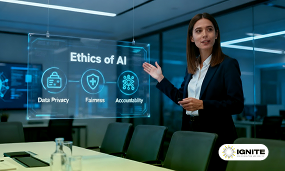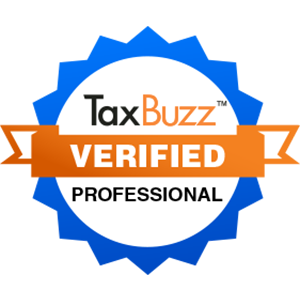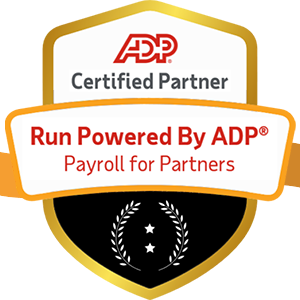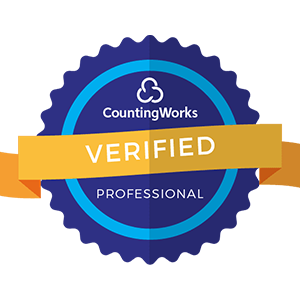AI promises to make HR more efficient and data-driven. But without careful ethical frameworks, these same tools can amplify bias, erode privacy, and make decisions that destroy careers. Here's how to get it right.
The AI Dilemma in HR
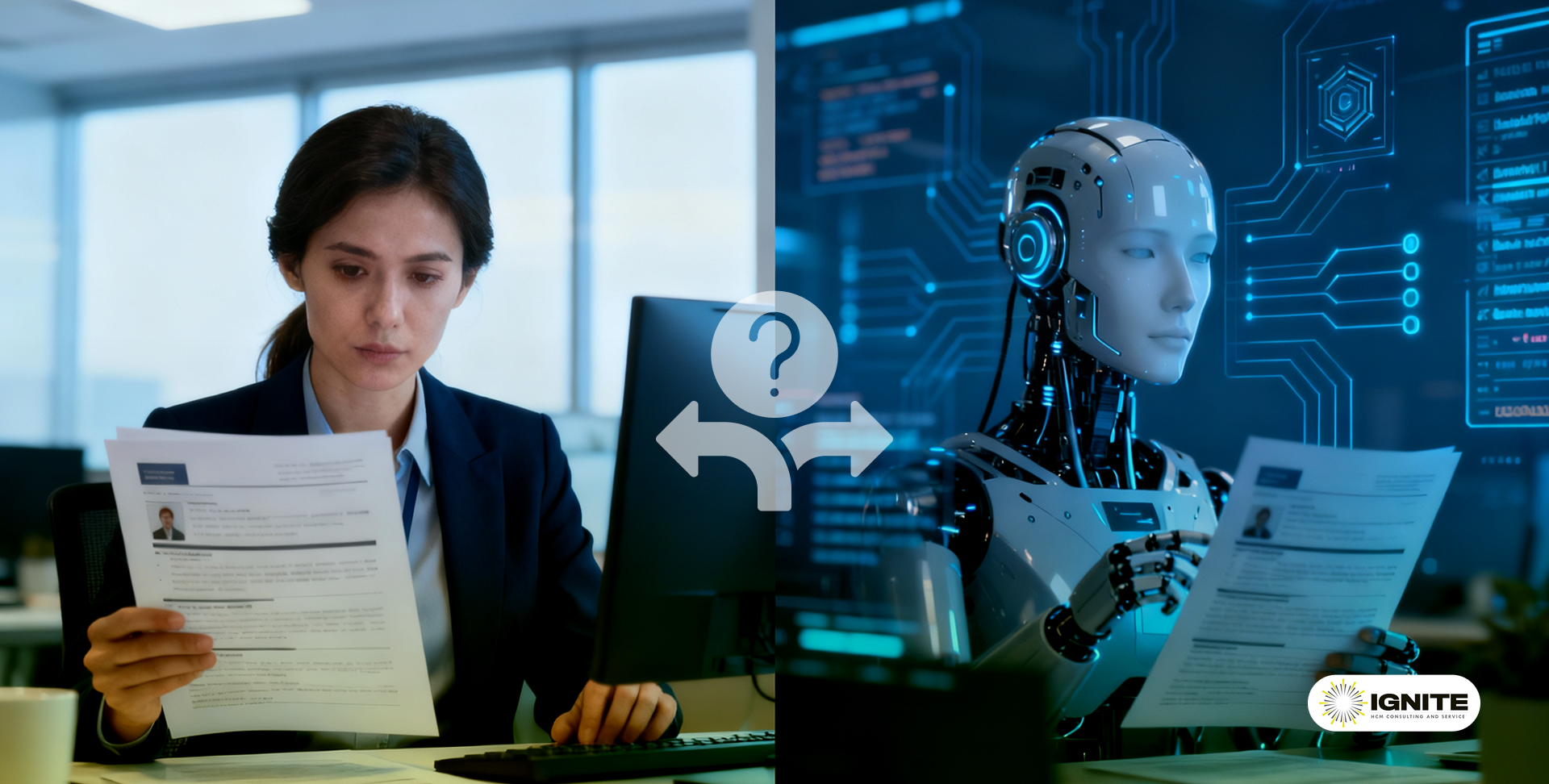
Imagine applying for your dream job. Your resume is perfect. Your qualifications match exactly. But you never get a call back—not because a human reviewed and rejected you, but because an algorithm scored you as "unsuitable" based on patterns in your work history that you'll never know about or be able to contest.
Or imagine being denied a promotion because an AI performance system flagged you as "underperforming" based on metrics that don't capture your actual contributions. No appeal process. No human review. Just an algorithmic decision that changes your career trajectory.
These aren't hypothetical scenarios—they're happening now.
Artificial intelligence is rapidly transforming human resources, with AI-powered tools increasingly making or influencing decisions about hiring, promotions, performance management, compensation, and terminations. The promise is compelling: more efficient processes, data-driven decisions, and potentially reduced human bias.
But the reality is far more complex—and the stakes couldn't be higher.
When AI makes mistakes or exhibits bias in consumer applications, people might see irrelevant ads or get bad product recommendations. When AI makes mistakes in HR, people lose job opportunities, careers stall, and livelihoods are threatened.
The question isn't whether to use AI in HR—that ship has sailed. The question is how to use it ethically, responsibly, and in ways that truly serve both organizations and the humans whose lives they impact.
The Promise and the Peril
The Optimistic Case for AI in HR
Potential Benefits:
Efficiency and Scale
- Process thousands of applications in minutes instead of weeks
- Automate repetitive administrative tasks
- Enable HR teams to focus on strategic, human-centered work
- Scale personalized employee experiences
Data-Driven Decision Making
- Surface patterns invisible to human observation
- Remove gut-feel decisions with evidence-based approaches
- Identify successful employee characteristics and trajectories
- Predict retention risks and intervene proactively
Bias Reduction Potential
- Counter unconscious human biases in hiring and promotion
- Evaluate candidates based on relevant qualifications only
- Expand candidate pools through broader sourcing
- Standardize evaluation criteria across all candidates
Continuous Improvement
- Enable frequent, granular feedback instead of annual reviews
- Personalize learning and development recommendations
- Identify skill gaps and growth opportunities
- Create more dynamic career pathing
The Cautionary Reality
But AI is not neutral—it's a reflection of the humans who create it and the data used to train it.
Real-World AI Failures in HR:
Amazon's Gender-Biased Recruiting Tool
- AI system trained on 10 years of resumes (predominantly male)
- Algorithm learned to penalize resumes containing "women's" (as in "women's chess club")
- Downgraded graduates of all-women's colleges
- Entire system scrapped after bias discovered
Hire Vue's Video Interview AI
- Analyzed facial expressions, word choice, and speaking patterns
- Accused of disadvantaging candidates with disabilities and non-Western communication styles
- Raised concerns about pseudoscience in "personality" analysis
- Eventually dropped facial analysis after regulatory scrutiny
Algorithmic Performance Management
- Systems measuring productivity through narrow metrics
- Penalizing employees for bathroom breaks or caregiving responsibilities
- Creating incentives for "gaming" metrics rather than genuine performance
- Disproportionate impact on working parents and employees with disabilities
The Pattern: Even well-intentioned AI can perpetuate and amplify the very biases it was meant to eliminate.
The Four Pillars of Ethical AI in HR
Pillar 1: Fairness and Non-Discrimination
The Core Principle: AI systems must treat all candidates and employees equitably, without discriminating based on protected characteristics like race, gender, age, disability, or other demographic factors.
Why This Is Hard:
Historical Bias in Training Data If AI is trained on past hiring, promotion, or performance data that reflects historical discrimination, it will learn and perpetuate those patterns.
Example: An AI trained on a tech company's past hiring data might learn that successful engineers are predominantly male and Asian—not because of actual performance differences, but because of historical hiring biases. It will then replicate those patterns.
Proxy Discrimination Even when demographic data is excluded, AI can discriminate through proxy variables that correlate with protected characteristics.
Example: Zip code can serve as a proxy for race and socioeconomic status. Alumni network membership can proxy for socioeconomic background. "Culture fit" scores can proxy for demographic similarity to current workforce.
Definition Disagreements Different stakeholders define "fairness" differently, and these definitions can conflict mathematically.
Fairness Definitions:
- Demographic parity: Equal selection rates across groups
- Equal opportunity: Equal true positive rates (qualified people from all groups have equal chance)
- Predictive parity: Equal positive predictive value (selected people from all groups perform equally)
- Individual fairness: Similar individuals treated similarly
These different fairness criteria often can't all be satisfied simultaneously—organizations must make explicit choices and trade-offs.
The Fairness Framework:
- Diverse and Representative Training Data
- Ensure training data includes adequate representation of all demographic groups
- Balance historical data with aspirational diversity goals
- Supplement historical data with synthetic data when needed
- Regularly audit data composition
- Sensitive Attribute Handling
- Identify all potential proxies for protected characteristics
- Test for indirect discrimination through proxy variables
- Use techniques like "fairness through unawareness" carefully (excluding protected attributes doesn't guarantee fairness)
- Consider "fairness through awareness" approaches when appropriate
- Explainability and Interpretability
- Use interpretable models when possible (decision trees, linear models)
- Implement explanation tools for complex models (LIME, SHAP)
- Provide clear reasoning for AI decisions to candidates/employees
- Enable auditing of decision-making logic
- Rigorous Bias Testing
- Conduct disparate impact analysis before deployment
- Use "four-fifths rule" as minimum threshold (selection rate for protected group should be at least 80% of highest group)
- Test for bias across intersectional identities, not just single characteristics
- Conduct ongoing monitoring post-deployment
- Human Review for High-Stakes Decisions
- Never fully automate hiring, promotion, or termination decisions
- Require human review of AI recommendations
- Enable humans to override AI when appropriate
- Create clear escalation procedures
Pillar 2: Transparency and Explainability
The Core Principle: Candidates and employees have the right to know when AI is being used to evaluate them, how it works, and how it influences decisions about their careers.
Why This Matters:
Informed Consent People can't meaningfully consent to evaluation by systems they don't understand.
Trust Building Transparency builds trust; opacity breeds suspicion and resistance.
Error Detection Only through transparency can errors and biases be identified and corrected.
Legal Compliance Many jurisdictions require disclosure of automated decision-making.
The Transparency Framework:
- Disclosure and Notice
What to Disclose:
- When AI is used in the hiring/evaluation process
- What data is collected and analyzed
- What the AI is evaluating (skills, personality, culture fit, etc.)
- How heavily AI recommendations weigh in final decisions
- Whether humans review AI outputs
How to Disclose:
- Clear, plain-language explanations (not legal jargon)
- Provided before AI evaluation occurs
- Accessible format (not buried in fine print)
- Opportunity to ask questions
Example Notice: "We use AI technology to screen resumes for positions. The AI analyzes work history, skills, and qualifications to identify candidates who best match the job requirements. All AI-flagged candidates are reviewed by human recruiters before interview decisions are made. The AI does not have access to your age, race, gender, or other demographic information."
- Algorithmic Transparency
Internal Transparency (for HR teams):
- Full documentation of AI system functionality
- Understanding of what factors influence decisions
- Access to model performance metrics
- Regular audit reports on fairness and accuracy
External Transparency (for candidates/employees):
- General explanation of how AI works
- Key factors the AI considers
- How to interpret AI-generated scores or recommendations
- Limitations and error rates of the system
- Individual Explanations
When AI influences a significant decision, provide:
- Explanation of why the decision was made
- Key factors that influenced the AI's assessment
- How the individual's qualifications were evaluated
- What could have led to a different outcome
Example Explanation: "Your application was not selected for an interview based on the following factors: The position requires 5+ years of experience with Python, and your resume showed 2 years. The role requires machine learning expertise, which was not evident in your work history. The AI also prioritizes candidates with experience in healthcare software, which you didn't mention."
- Transparency Reports
Annual or biannual public reports including:
- AI systems used in HR and their purposes
- Fairness audits and disparate impact analyses
- Error rates and accuracy metrics
- Changes made based on fairness concerns
- Governance structures and accountability measures
Pillar 3: Accountability and Human Oversight
The Core Principle: Clear accountability structures must govern AI in HR, with humans responsible for design, deployment, monitoring, and final decisions.
Why This Matters:
Responsibility Gap When AI makes decisions, accountability can become diffused—the vendor blames the implementation, HR blames the vendor, leadership blames HR. Someone must be clearly responsible.
Need for Human Judgment HR decisions require nuanced understanding of context, organizational culture, and individual circumstances that AI cannot provide.
Error Correction When AI systems malfunction or exhibit bias, organizations must be able to act quickly to correct course.
The Accountability Framework:
- Governance Structure
Key Roles and Responsibilities:
AI Ethics Committee
- Cross-functional team (HR, legal, IT, ethics, employee representatives)
- Reviews all proposed HR AI implementations
- Sets ethical standards and guidelines
- Investigates concerns and complaints
- Reports to executive leadership
HR AI Owner
- Senior HR leader accountable for all HR AI systems
- Ensures compliance with ethical principles
- Champions responsible AI use
- Final escalation point for concerns
Technical AI Auditor
- Independent reviewer of AI systems
- Conducts bias testing and fairness audits
- Monitors performance and accuracy
- Reports directly to AI Ethics Committee
Legal Compliance Officer
- Ensures regulatory compliance
- Reviews vendor contracts
- Manages legal risk
- Advises on disclosure and consent
- Human-in-the-Loop Design
Decision Levels:
AI Recommends, Human Decides
- Use for: Hiring, promotions, terminations, significant performance evaluations
- AI provides recommendations with explanations
- Human makes final decision considering AI input plus context
- Human can override AI recommendations
- Human documents rationale for final decision
AI Decides, Human Can Override
- Use for: Routine administrative tasks, initial screening, scheduling
- AI makes decision automatically
- Human can review and override
- Clear escalation process
- Regular audits of AI decisions
AI Informs, Human Analyzes
- Use for: Trend analysis, workforce planning, skills gap identification
- AI provides insights and patterns
- Human interprets and determines actions
- Used for strategic planning, not individual decisions
- Appeals and Recourse
Essential Elements:
- Clear process for challenging AI-influenced decisions
- Accessible to all candidates and employees
- Human review of appeals (not automated)
- Timely resolution (specified timeframe)
- Feedback to improve AI system when errors found
Appeals Process Example:
Step 1: Employee submits appeal explaining concerns Step 2: Human reviewer examines AI recommendation and decision Step 3: Independent review if initial appeal denied Step 4: Decision communicated with explanation Step 5: If AI error found, system updated to prevent recurrence
- Proactive Impact Assessments
Before deploying any HR AI system:
Algorithmic Impact Assessment (AIA) including:
- Purpose and intended benefits
- Data sources and quality
- Potential for discriminatory impact
- Privacy implications
- Accuracy and error rates
- Transparency measures
- Accountability mechanisms
- Mitigation strategies for identified risks
- Ongoing monitoring plans
Pillar 4: Privacy and Data Protection
The Core Principle: HR AI must protect the highly personal data it processes, collecting only what's necessary and using it only for legitimate purposes.
Why This Is Critical:
Sensitivity of HR Data
- Employment history and performance data
- Compensation information
- Health and disability information
- Personality and psychological assessments
- Social connections and communication patterns
Regulatory Requirements
- GDPR in Europe
- CCPA in California
- State-specific laws across US
- Industry-specific regulations (finance, healthcare)
Employee Trust Privacy violations destroy trust and damage employer brand.
The Privacy Framework:
- Data Minimization
Principles:
- Collect only data necessary for specific purpose
- Retain data only as long as needed
- Delete data when no longer required
- Limit access to need-to-know basis
Implementation:
- Define clear purpose for each data collection
- Establish retention schedules
- Implement automated data deletion
- Regular audits of data holdings
- Consent and Control
Informed Consent:
- Clear explanation of what data is collected
- How it will be used and shared
- Genuinely optional participation where possible
- Easy withdrawal of consent
Individual Rights:
- Access to personal data held by organization
- Correction of inaccurate information
- Deletion requests (right to be forgotten)
- Data portability (export your data)
- Opt-out of certain data processing
- Security Measures
Technical Safeguards:
- Encryption at rest and in transit
- Access controls and authentication
- Regular security audits
- Incident response plans
- Vendor security requirements
Organizational Safeguards:
- Clear data handling policies
- Training for all who access HR data
- Logging and monitoring of data access
- Consequences for policy violations
- Advanced Privacy Techniques
Privacy-Enhancing Technologies:
Differential Privacy
- Add statistical noise to data
- Enables aggregate analysis while protecting individuals
- Makes it impossible to identify specific people in dataset
Federated Learning
- Train AI models without centralizing data
- Model updates shared, not raw data
- Keeps sensitive data on local devices/servers
Anonymization and Pseudonymization
- Remove or encrypt identifying information
- Allow analysis while protecting privacy
- Implement carefully to prevent re-identification
- Model Privacy Risks
Model Inversion Attacks: Even with anonymized training data, AI models can sometimes be reverse-engineered to reveal information about training data individuals.
Mitigation:
- Use privacy-preserving machine learning techniques
- Limit model access and query capabilities
- Monitor for unusual model queries
- Regular security assessments
Operationalizing Ethical AI: Your Implementation Roadmap
Phase 1: Foundation and Assessment (Months 1-3)
- Establish Governance
Create AI Ethics Committee:
- 7-10 members from diverse functions and backgrounds
- Clear charter and authority
- Regular meeting schedule (at least monthly)
- Reporting line to executive leadership
Assign Clear Ownership:
- Executive sponsor (C-suite level)
- HR AI owner (senior HR leader)
- Technical lead (IT/data science)
- Legal/compliance lead
- Inventory Current AI Use
Document all HR AI systems:
- What they do and how they work
- What data they use
- Who has access
- Vendor information
- Integration points
Assess each system:
- Alignment with ethical principles
- Risks and concerns
- Compliance status
- Improvement opportunities
- Develop Ethical Guidelines
Create organization-specific principles:
- Build on the four pillars (fairness, transparency, accountability, privacy)
- Adapt to organizational values and culture
- Include specific requirements and standards
- Define prohibited uses
Example Prohibited Use: "AI will never be used as the sole determinant of hiring, promotion, or termination decisions. Human review and final decision-making is mandatory for all employment decisions."
Phase 2: Standards and Training (Months 4-6)
- Develop Technical Standards
Data Standards:
- Required diversity and representation in training data
- Data quality requirements
- Privacy protections
- Retention and deletion policies
Model Standards:
- Fairness metrics and thresholds
- Accuracy and error rate requirements
- Explainability requirements
- Testing and validation procedures
Deployment Standards:
- Human oversight requirements
- Monitoring and alerting
- Appeals processes
- Documentation requirements
- Create Vetting Process
For all new HR AI systems:
- Proposal and business case
- AI Ethics Committee review
- Algorithmic Impact Assessment
- Pilot program requirements
- Approval gates before full deployment
- Build AI Literacy
Training Programs:
For HR Staff:
- AI fundamentals and terminology
- How AI systems work
- Interpreting AI recommendations
- Ethical considerations
- When and how to override AI
For Managers:
- AI's role in HR processes
- How to use AI tools effectively
- Limitations and risks
- Employee communication
- Responsibility for final decisions
For All Employees:
- How AI is used in HR
- Employee rights and protections
- How to access personal data
- Appeals processes
- Privacy protections
Phase 3: Pilot and Test (Months 7-9)
- Select Pilot Use Case
Good First Candidates:
- High-volume, routine processes (resume screening)
- Lower-risk applications
- Clear success metrics
- Diverse candidate/employee pool for testing
Poor First Candidates:
- High-stakes decisions (terminations)
- Small sample sizes
- Politically sensitive areas
- Systems with poor explainability
- Rigorous Testing
Pre-Deployment Testing:
- Historical data analysis for bias
- Simulated scenarios across demographic groups
- Red team testing (try to break it)
- User experience testing
Pilot Monitoring:
- Real-time bias monitoring
- Accuracy tracking
- User feedback collection
- Comparison to non-AI process
Success Criteria:
- No disparate impact detected
- Accuracy meets or exceeds human baseline
- Positive user feedback
- Improved efficiency/outcomes
- Successful appeals process
- Iterate and Refine
Based on pilot results:
- Adjust algorithms and models
- Refine training data
- Improve explanations and transparency
- Update policies and procedures
- Enhance training programs
Phase 4: Scale and Monitor (Months 10-12+)
- Gradual Rollout
Phased Approach:
- Start with one department or location
- Expand to similar use cases
- Scale across organization
- Add more complex applications
At Each Phase:
- Comprehensive communication
- Training for affected stakeholders
- Monitoring and evaluation
- Feedback collection and response
- Ongoing Monitoring
Monthly Metrics:
- Fairness audits (disparate impact analysis)
- Accuracy and error rates
- User satisfaction
- Appeals volume and outcomes
Quarterly Reviews:
- Comprehensive performance review
- Bias testing across intersectional identities
- Comparison to ethical standards
- Identification of improvement areas
Annual Assessments:
- Full algorithmic impact assessment
- External audit (when appropriate)
- Transparency report publication
- Strategic review and planning
- Continuous Improvement
Feedback Loops:
- Employee and candidate feedback channels
- Regular stakeholder consultations
- Industry best practice monitoring
- Technology advancement tracking
System Updates:
- Regular retraining with new data
- Algorithm improvements
- Feature enhancements
- Risk mitigation refinements
Common Challenges and How to Address Them
Challenge 1: The Black Box Problem
The Issue: Many powerful AI systems (deep neural networks) are inherently difficult to explain, creating tension between performance and transparency.
The Response:
- Prioritize interpretable models for high-stakes decisions
- Invest in explainability tools (LIME, SHAP) for complex models
- Accept potential performance trade-offs for explainability
- Clear documentation of model limitations
- Robust human oversight when using black box systems
Challenge 2: Defining and Measuring Fairness
The Issue: Different fairness metrics can conflict mathematically, forcing organizations to make explicit trade-offs.
The Response:
- Involve diverse stakeholders in defining fairness for your context
- Be transparent about which fairness definition you're using
- Test multiple fairness metrics
- Document rationale for chosen approach
- Be willing to revisit and revise
Challenge 3: Vendor Accountability
The Issue: Many HR AI systems are purchased from vendors, making it difficult to audit or control algorithms.
The Response:
- Include ethical AI requirements in vendor contracts
- Require bias testing and fairness audits
- Demand transparency about training data and algorithms
- Reserve right to independent auditing
- Consider custom-built systems for high-stakes applications
- Don't outsource ethical responsibility to vendors
Challenge 4: Balancing Privacy and Effectiveness
The Issue: More data can improve AI accuracy, but raises privacy concerns.
The Response:
- Data minimization as default
- Clear justification for each data element collected
- Privacy-enhancing technologies (differential privacy, federated learning)
- Strong security and access controls
- Regular data deletion
- Employee control over personal data
Challenge 5: Keeping Pace with Technology
The Issue: AI technology evolves rapidly, potentially outpacing ethical frameworks and regulations.
The Response:
- Build adaptable frameworks, not rigid rules
- Regular review and update of policies
- Dedicated team monitoring AI developments
- Participation in industry working groups
- Commitment to continuous learning
- Willingness to pause or reverse course when necessary
The Competitive Advantage of Ethical AI
Beyond Compliance: Business Benefits
- Talent Attraction and Retention
The Reality:
- Nearly 50% of workers say they wouldn't apply to companies using AI unfairly
- 67% of employees are concerned about AI replacing jobs or evaluating them
- Transparency and fairness are key differentiators in tight labor markets
The Advantage: Companies known for ethical AI use become employers of choice for top talent.
- Better AI Performance
The Paradox: The steps required to make AI ethical also make it more effective.
How:
- Interrogating data for bias reveals quality issues
- Explainability requirements surface model weaknesses
- Diverse training data improves generalization
- Rigorous testing catches errors before deployment
- Continuous monitoring enables ongoing improvement
- Risk Mitigation
Avoided Costs:
- Legal liability from discriminatory decisions
- Regulatory fines and penalties
- Reputational damage from AI failures
- Employee relations problems
- Class action lawsuits
- Organizational Trust
Internal Benefits:
- Employees trust HR processes
- Greater engagement with feedback and development
- Reduced resistance to organizational change
- Improved collaboration between HR and technology teams
- Cultural alignment around ethics and values
Real-World Examples: Learning from Pioneers
Success Story: Unilever's Ethical AI Recruitment
The Challenge: Needed to screen hundreds of thousands of applicants annually while ensuring fairness.
The Approach:
- Multiple assessment types (games, video interviews, structured interviews)
- Regular bias audits at each stage
- Transparency about AI use
- Human review of final candidates
- Continuous monitoring and adjustment
The Results:
- More diverse candidate pools
- Faster hiring process
- Positive candidate feedback
- No detected disparate impact
- Model for responsible AI use
Key Lessons:
- Multi-method assessment reduces single-point-of-failure bias
- Transparency builds candidate trust
- Regular auditing is essential
- Human oversight remains critical
Cautionary Tale: HireVue's Video Analysis
The Challenge: Using AI to analyze video interviews for hiring decisions.
The Problems:
- Analyzed facial expressions and speech patterns
- Concerns about pseudoscience in "personality" detection
- Potential bias against non-Western communication styles
- Disadvantaged people with disabilities
- Lack of transparency about how it worked
The Outcome:
- Regulatory investigation
- Public backlash
- Eventually discontinued facial analysis
- Reputation damage
Key Lessons:
- Just because you can measure something doesn't mean you should
- Scientific validity matters
- Consider disparate impact across diverse populations
- Transparency prevents worse problems later
- Be willing to reverse course when ethical issues emerge
Mixed Results: Amazon's Recruiting Tool
The Goal: Automate resume screening to handle high application volumes.
The Failure:
- Trained on historical hiring data (10 years of resumes)
- Historical data reflected male-dominated engineering hires
- AI learned to penalize resumes with "women's" or from all-women's colleges
- Gender bias detected during testing
- Project scrapped before deployment
What Went Right:
- Bias was detected before deployment
- Company chose to scrap rather than deploy biased system
- Transparent about failure
Key Lessons:
- Historical data perpetuates historical bias
- Testing and auditing saved them from deploying discriminatory system
- Organizational commitment to ethics enabled making hard decision
- Sometimes the right answer is "don't deploy"
Looking Ahead: The Future of Ethical AI in HR
Emerging Opportunities
Personalized Development at Scale: AI enabling truly individualized career development and learning paths for every employee.
Proactive Wellbeing: Early detection of burnout, stress, or engagement issues with ethical intervention.
Skills-Based Hiring: Moving beyond credentials to actual capability assessment, potentially increasing opportunity.
Bias Reduction: Next-generation AI specifically designed to counteract rather than perpetuate bias.
Emerging Challenges
Deepening Surveillance: AI's expanding capabilities for monitoring and analyzing employee behavior.
Algorithmic Management: AI systems making real-time work direction and performance management decisions.
Emotion AI: Technology claiming to detect emotions and mental states, with questionable validity.
Prediction Creep: Expanding use of predictive AI beyond hiring into performance, retention, and more.
The Regulatory Landscape
Current and Proposed Regulations:
European Union:
- AI Act categorizing AI systems by risk level
- High-risk classification for most HR AI
- Transparency, testing, and human oversight requirements
United States:
- EEOC focus on AI discrimination
- NYC Local Law 144 requiring bias audits for hiring AI
- State-level regulations emerging
- Likely federal regulation in coming years
Global:
- Increasing regulatory attention worldwide
- ISO standards development for AI
- Industry-specific guidance emerging
Implication: Regulatory floor rising—ethical AI becoming legal requirement, not just best practice.
Your Ethical AI Commitment
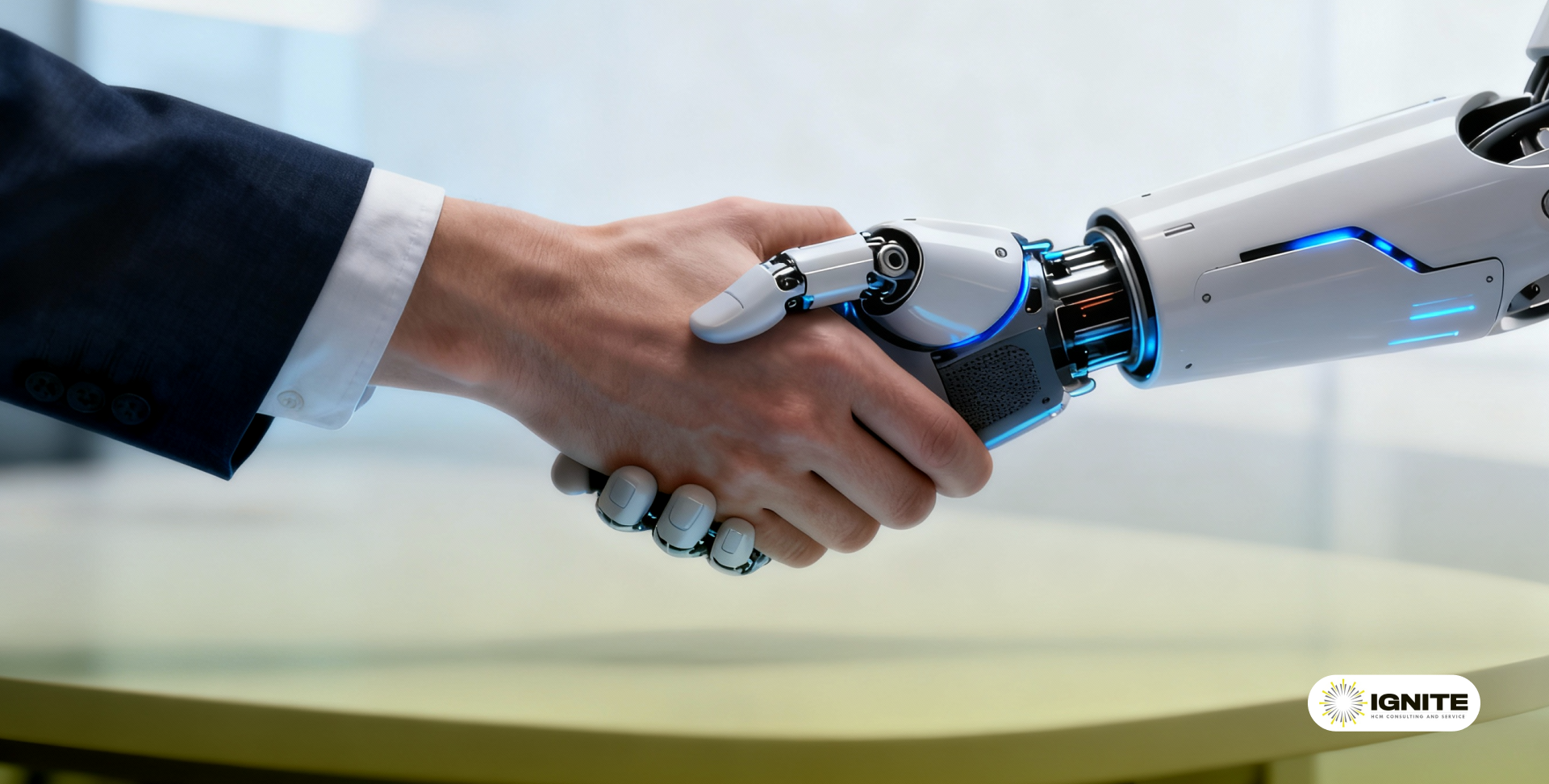
For HR Leaders
Your Responsibility: As AI takes on greater roles in HR, you remain accountable for treating people fairly and with dignity.
Your Commitment Should Include:
- No fully automated high-stakes decisions
- Transparency about AI use with employees
- Regular bias testing and fairness audits
- Clear accountability structures
- Strong privacy protections
- Employee voice and appeals processes
- Ongoing monitoring and improvement
- Willingness to pause or reverse course when problems emerge
Your Questions to Ask:
Before deploying any HR AI:
- Can we explain how this system makes decisions?
- Have we tested for bias across all relevant groups?
- Are privacy protections adequate?
- Is there meaningful human oversight?
- Would I want to be evaluated by this system?
- Can people challenge decisions?
- What's our plan if something goes wrong?
For Organizations
Ethical AI in HR as Strategic Priority:
Board/Executive Level:
- Include AI ethics in risk oversight
- Allocate resources for ethical AI implementation
- Set tone from top about importance
- Hold leaders accountable
Organizational Culture:
- Values that prioritize people over efficiency
- Permission to raise ethical concerns
- Reward ethical decision-making
- Learn from mistakes openly
Long-Term Commitment:
- Ethical AI is ongoing, not one-time
- Continuous investment in governance and oversight
- Adaptation as technology evolves
- Participation in industry standards development
Conclusion: The Responsibility We Can't Automate
Artificial intelligence offers tremendous potential to make HR more efficient, data-driven, and even more fair. But realizing that potential requires intentional, ongoing commitment to ethical principles and responsible implementation.
The hard truth: There is no autopilot for ethical AI. No vendor can sell you a "bias-free" system. No single audit guarantees fairness. No policy document ensures ethical use.
Ethical AI in HR requires:
- Constant vigilance for bias and fairness issues
- Genuine transparency even when uncomfortable
- Clear accountability with humans making final calls
- Strong privacy protections that respect human dignity
- Willingness to question, pause, and reverse course
- Humility about what AI can and cannot do
The stakes are clear: These AI systems make decisions that shape careers, determine livelihoods, and impact people's lives. Getting it wrong doesn't just create bad PR—it causes real harm to real people.
The opportunity is equally clear: Organizations that get ethical AI right don't just avoid problems—they build competitive advantages through trust, attract better talent, make better decisions, and create workplaces where people truly thrive.
In an age of automation, the most human qualities—fairness, transparency, accountability, and respect for dignity—become more important, not less.
When it comes to people's careers and livelihoods, there's no room for AI to be a black box. HR leaders must commit to making their AI systems fair, transparent, and accountable at every turn.
The future of work is being shaped right now through the AI systems we choose to build and deploy. The question is: Will that future be one we're proud of?
The answer depends on choices we make today. Choose wisely. Implement thoughtfully. Lead ethically.
The responsibility for ethical AI in HR cannot be automated. It's the distinctly human work that matters most.
